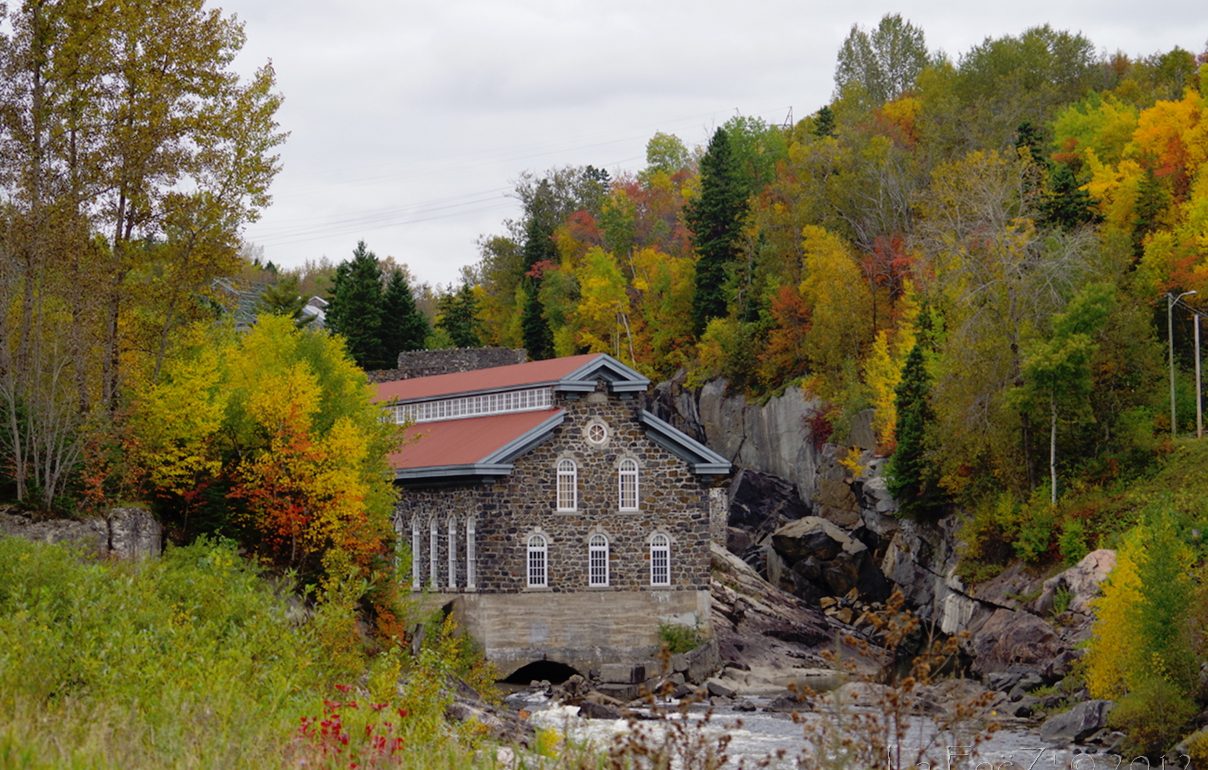Old Chicoutimi Pulp Mill: an exceptional industrial legacy

Located on the banks of the Chicoutimi River a kilometer upstream from the Saguenay River, the Old Chicoutimi Pulp Mill evokes the glory days of the pulp and paper industry in Quebec at the turn of the 19th and 20th centuries. On a remarkably preserved 30 hectare piece of land, the beautiful stone buildings, exhibits and interpretation trail give visitors a chance to delve into the history of French Canada’s industrial heritage and Saguenay economic and cultural life. A hydroelectric complex that is still in use today enhances the visitor’s experience. This splendid site, preserved and developed by the Corporation de la Vieille Pulperie de Chicoutimi, is registered on Quebec’s cultural heritage register.
To learn more…
Discovering the history of pulp and paper
A visit to the Old Pulp Mill is an opportunity to discover a whole complex of stone structures and buildings that are quite literally flush-mounted against the river. The Jardin des Vestiges comprises pulp and paper mills constructed in 1898 and 1912, and visitors are guided by signs that dot the interpretation trail. Performances are held in the summer amid the masterpieces of our industrial architectural heritage. The main building of the Old Pulp Mill has an exhibit on the history of its workers and the various processes for making paper pulp, including a 1915 film showing the production steps, from sawing, debarking, pulping and pressing, up to and including baling and shipping to American markets. The most striking feature is unquestionably Maison Arthur-Villeneuve, which was moved inside the museum in 1994. The works of naïve painter Villeneuve painted on the walls of this house and museum tell us about the history of the region.
Water, trees and men
The location of the Old Pulp Mill is not a matter of chance. The topography in the area is very uneven, and the vertical drop gives the Chicoutimi River impressive hydraulic power (a motor capacity of over 25,000 horse power). The site was perfect for the establishment of a plant requiring a great deal of energy. The river powers both the plant and the city itself.
The region is also rich in conifers, particularly spruce, a prized species for the production of paper pulp, while the proximity to the Saguenay River and the railway line to Quebec City facilitated the exporting of paper pulp.
The Old Pulp Mill is located in the Bassin neighbourhood, the cradle of the Chicoutimi District, an area that had an abundant manpower. At its peak in the early 1920s, the firm provided work for a thousand paper workers, in addition to hundreds of forest workers.
An industrial cathedral
Founded in 1896, the Old Pulp Mill was run for the most part by Francophones, an exceptional situation in the Canadian industry at the time. The French Fact would also be one of the distinctive trademarks of the company, in terms of language of work, signage and bookkeeping. Archived documents dating from when the Old Pulp Mill was in operation greatly facilitated the site’s contemporary development.
Canadian, American, German, Swedish and Norwegian engineers and workers were hired between 1897 and 1922 to construct a sawmill, hydraulic works, an electrical substation, a workshop and four mills (built in 1898, 1903, 1912 and 1922, respectively). The last mill operated using electricity, demonstrating that the Old Pulp Mill was in the vanguard of the industry. The wooden, concrete and steel structures also reflect the advanced construction techniques of the times. A local quarry provided granite required for the construction, giving the buildings a typically regional character. The style and imposing size of the buildings, with their rectangular volumes made of fieldstone walls, arched windows and gabled façades, contributed to the prestige of the mill, a true industrial cathedral of Chicoutimi.
The Old Pulp Mill immediately achieved excellence, even winning the gold medal at the Paris World’s Fair in 1900! Ten years later, it was the largest maker of mechanical pulp in Canada. It ranked number one in the world another decade later, with a production of some 400 tonnes per day! Unfortunately, the mill’s success eventually came to an abrupt stop: poor decisions, the bankruptcy of one if its major clients and strong competition caused it to go bankrupt in 1924.





